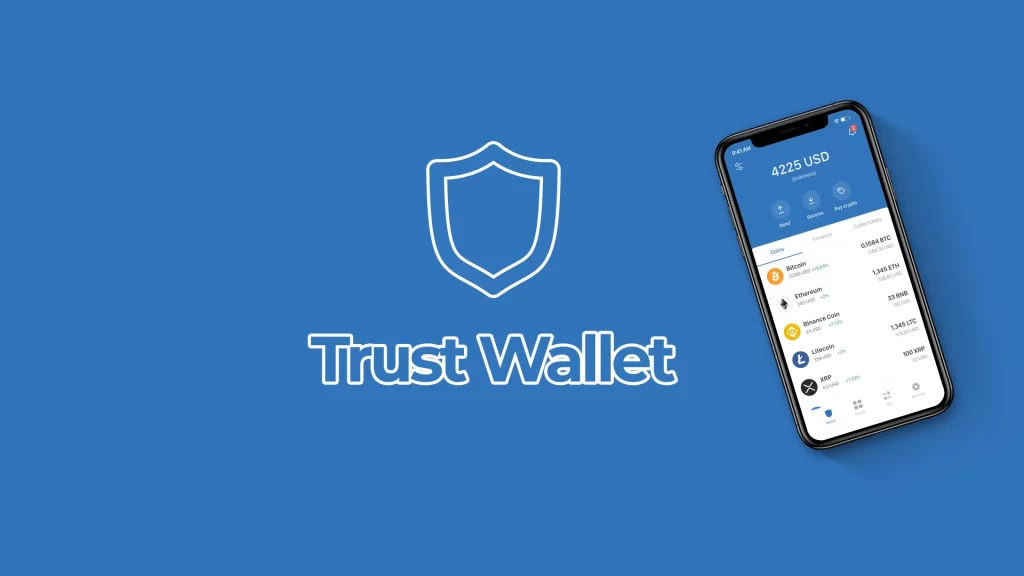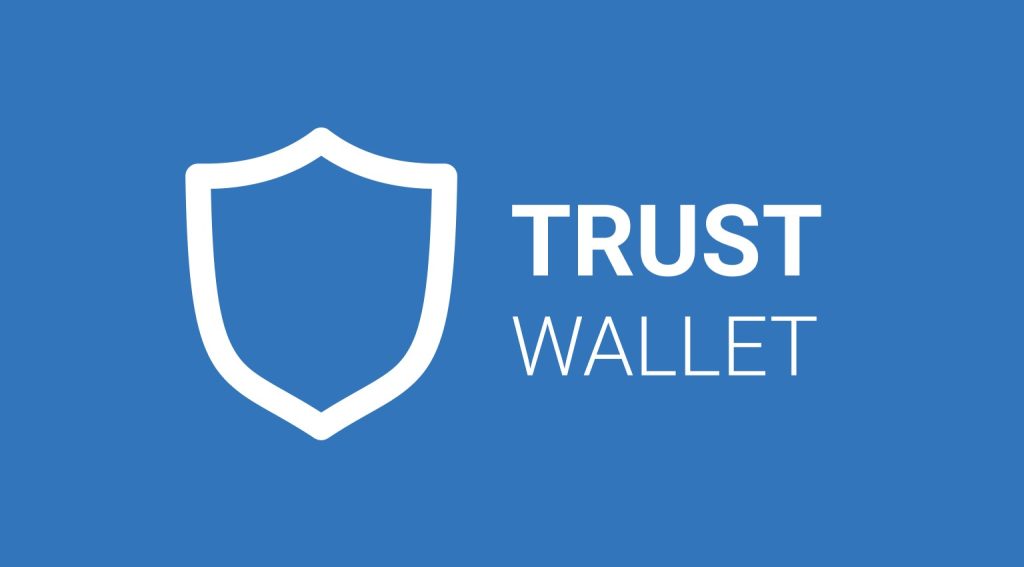
Yes, if your private keys or recovery phrase are compromised, money can be stolen from your Trust Wallet. Always keep them secure.
Security Measures
Encryption Standards
Trust Wallet uses robust encryption to protect user data.
- Advanced Encryption: Utilizes AES-256 encryption to secure private keys and sensitive data.
- End-to-End Encryption: Ensures communication between the app and blockchain networks is secure.
- Local Storage: Stores private keys locally on the user’s device, never on servers.
- Security Audits: Regular third-party audits to identify and address vulnerabilities.
Biometric Authentication
Trust Wallet enhances security with biometric authentication.
- Fingerprint Recognition: Enables fingerprint recognition to unlock the wallet.
- Face Recognition: Offers facial recognition for secure access on supported devices.
- Multi-Factor Authentication (MFA): Combines biometrics with PIN or password for added security.

Common Threats
Phishing Attacks
Phishing attacks are a common threat to cryptocurrency wallets, where attackers attempt to deceive users into providing sensitive information.
- Email Phishing: Attackers send emails pretending to be from Trust Wallet or other legitimate sources, asking for private keys or recovery phrases.
- Fake Websites: Phishers create fake websites that mimic Trust Wallet’s official site to steal user credentials.
- Social Engineering: Attackers may use social engineering techniques, posing as customer support to extract sensitive information from users.
- Prevention Tips: Always verify the authenticity of emails and websites. Never share your recovery phrase or private keys. Use bookmarks for official sites and double-check URLs.
Malware and Viruses
Malware and viruses can compromise the security of your device and Trust Wallet.
- Keyloggers: Malicious software that records keystrokes to capture private keys and passwords.
- Trojan Horses: Malware disguised as legitimate software that can give attackers remote access to your device.
- Adware and Spyware: Software that monitors your activities and may capture sensitive information.
- Prevention Tips: Keep your device and Trust Wallet app updated with the latest security patches. Use reputable antivirus and anti-malware software. Avoid downloading apps from unknown sources and be cautious of suspicious links and attachments.
Protecting Your Recovery Phrase
Safe Storage Tips
To ensure the security of your Trust Wallet, it is crucial to protect your recovery phrase. Here are some safe storage tips:
- Write It Down: Physically write down your recovery phrase on paper. This ensures it is kept offline and away from potential digital threats.
- Multiple Copies: Create several copies of your recovery phrase and store them in different secure locations to prevent loss due to theft, fire, or other disasters.
- Use a Safe: Store the written copies in a safe or a secure, lockable drawer to protect them from unauthorized access.
- Laminated Copies: Consider laminating the paper copies to protect them from water damage and wear over time.
- Avoid Obvious Locations: Do not store your recovery phrase in easily guessable places such as under your keyboard, in your wallet, or with your computer equipment.
Avoiding Digital Storage
Storing your recovery phrase digitally increases the risk of theft due to hacking or malware. Follow these guidelines to avoid digital storage:
- No Screenshots: Never take a screenshot of your recovery phrase, as it can be accessed by malicious software or through cloud storage hacks.
- No Digital Notes: Avoid saving your recovery phrase in digital notes, documents, or password managers, as these can be compromised.
- No Email or Cloud Storage: Do not email your recovery phrase to yourself or store it in cloud services, as these platforms can be targeted by hackers.
- No Photos: Refrain from taking photos of your recovery phrase, as images can be inadvertently uploaded to cloud storage or accessed by malicious apps.

User Responsibilities
Regular Software Updates
Keeping your software up to date is a critical aspect of maintaining the security of your Trust Wallet and other digital assets. Here are the key points to consider:
- Update Trust Wallet: Regularly check for updates to the Trust Wallet app and install them promptly. Updates often include important security patches and new features.
- Update Operating System: Ensure your mobile device’s operating system is up to date. This helps protect against vulnerabilities that could be exploited by attackers.
- Update Other Apps: Keep all other apps on your device updated, especially those related to security, such as antivirus software and web browsers.
Safe Internet Practices
Practicing safe internet habits is essential to protect your digital assets from online threats. Here are some tips:
- Use Secure Connections:
- Avoid Public Wi-Fi: Refrain from accessing your Trust Wallet over public Wi-Fi networks. Use a secure, private connection instead.
- Use a VPN: Consider using a virtual private network (VPN) to encrypt your internet connection and protect your online activities from eavesdropping.
- Be Wary of Phishing Scams:
- Verify URLs: Always verify the URL of websites before entering sensitive information. Look for HTTPS and check for any unusual characters in the URL.
- Avoid Clicking Suspicious Links: Do not click on links or download attachments from unknown or unsolicited emails and messages.
- Enable Two-Factor Authentication (2FA):
- Use 2FA for Accounts: Enable 2FA on all accounts related to your cryptocurrency activities, including email, exchanges, and Trust Wallet.
- Authenticator Apps: Use authenticator apps like Google Authenticator or Authy rather than SMS-based 2FA for better security.
- Regularly Monitor Accounts:
- Check for Unauthorized Activity: Frequently review your transaction history and account activity for any signs of unauthorized access.
- Set Up Alerts: Enable email or SMS notifications for account activities to stay informed about any changes in real-time.

Incident Response
What to Do if Hacked
If you suspect that your Trust Wallet or any related accounts have been hacked, it is crucial to act quickly to mitigate potential damage. Follow these steps:
- Remain Calm: Stay composed to think clearly and take necessary actions effectively.
- Disconnect Internet: Immediately disconnect your device from the internet to prevent further unauthorized access.
- Change Passwords: Use a secure device to change passwords for all compromised accounts, starting with your email and any linked financial accounts.
- Enable 2FA: If not already enabled, set up two-factor authentication (2FA) on your accounts to add an extra layer of security.
- Transfer Funds: If possible, transfer your remaining funds to a new, secure wallet that has not been compromised.
- Scan for Malware: Use trusted antivirus software to scan your device for malware and remove any malicious programs.
Contacting Support
After securing your accounts, contacting support can provide further assistance and help you recover from the incident:
- Trust Wallet Support:
- Visit the Trust Wallet Website: Go to the official Trust Wallet website and navigate to the support section.
- Submit a Ticket: Provide detailed information about the incident, including the wallet address and transaction details.
- Follow Instructions: Follow the instructions provided by the support team to assist with the investigation and recovery process.
- Exchange Support:
- Contact Exchange Platforms: If your funds were transferred to an exchange, contact their support team immediately.
- Provide Details: Share all relevant details about the unauthorized transaction to aid in the investigation.
- Law Enforcement:
- Report the Incident: Consider reporting the hack to local law enforcement or cybercrime units, especially if significant amounts of funds are involved.
- Provide Evidence: Share any evidence and documentation you have gathered during your incident response.

Trust Wallet’s Security Features
Two-Factor Authentication
Trust Wallet enhances security by encouraging the use of two-factor authentication (2FA) for associated accounts:
- Enhanced Security: Combines password and authentication code for access.
- Setup: Use authenticator apps like Google Authenticator or Authy for email and exchanges.
- Prevents Unauthorized Access: Adds an extra layer of protection.
Secure Transactions
Trust Wallet ensures secure transactions with several key features:
- Private Key Control:
- User-Controlled Keys: Private keys are stored locally on the user’s device.
- Backup and Recovery: Securely store the recovery phrase provided by Trust Wallet.
- Encryption:
- Data Encryption: Encrypts private keys and transaction data on the device.
- Secure Communication: Uses secure protocols for blockchain interactions.
- Biometric Authentication:
- Supports Biometrics: Enables fingerprint and face recognition for wallet access.
- Transaction Verification:
- Multi-Step Verification: Requires password or biometric authentication for transactions.
- Review Details: Users can verify transaction details before confirmation.
- Regular Updates:
- Software Updates: Regular updates improve security and functionality. Keep the app updated for the latest features.

Community and Support
User Experiences
Trust Wallet has a strong community of users who share their experiences and provide support to each other:
- Forums and Discussion Groups: Users frequently participate in forums and online groups to discuss their experiences, share tips, and offer solutions to common issues.
- Social Media: Platforms like Reddit, Twitter, and Telegram host active communities where users can ask questions, share updates, and stay informed about the latest developments.
- User Reviews: Many users share their positive experiences and feedback through app reviews and testimonials, highlighting the wallet’s ease of use and robust security features.
Official Resources and Help
Trust Wallet provides several official resources to help users effectively manage their digital assets and resolve any issues:
- Official Website: The Trust Wallet website offers comprehensive information, including detailed guides, FAQs, and troubleshooting tips.
- Help Center: The Help Center on the website provides answers to common questions and step-by-step instructions for using the wallet’s features.
- Customer Support: Users can contact Trust Wallet’s support team through the app or website for personalized assistance with specific issues.
- Educational Content: Trust Wallet’s blog and documentation offer educational articles, tutorials, and updates on new features and security practices.